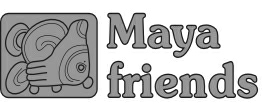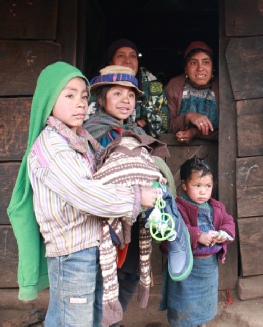













Why choose Mayafriends?
Mayafriends use local knowledge and international support to make a sustainable effort in the mayan community.



Contact Info
Tel: +47 33 45 20 12
Mob: +47 45 20 59 97
Org.nr.: 998 762 227
Bank account: 2500.23.03690
IBAN: NO23 2500 2303 690
SWIFT/BIC: ANBUN021


Social




Hitcount
Webdesign - © Mayafriends 2012
Mayans
About the Maya
The Maya is a Mesoamerican civilisation noted for the only known fully developed written language of the pre-columbian Americas, as well as for its art, architecture, and mathematical and astronomical systems. The Mayan culture first emerged around 2600 - 2000 BC, mainly in today’s Guatemala and Mexico, but their influence can be detected from Honduras, Belize, Guatemala and western El Salvador to as far as central Mexico. The Mayan people never disappeared, neither during the classic periods decline, or as a result of the arrival of the Spanish in the 16th century, and subsequent Spanish colonization. Today, the Maya and their descendants form a sizeable population throughout the areas, and still maintain a distinctive set of traditions, philosophies and beliefs.
Out of Guatemala's 15 million people over half are of Mayan origin, still speak Mayan languages and maintain their culture and ancient traditions. They are also among the majority of the people in this country living in extreme poverty, and are forced to share less than 20% of the country’s agricultural resources, while the rest is owned and controlled by the Latin American upper classes. Illiteracy, child mortality and malnutrition are among the highest in the region, and child labour and cases of HIV/AIDS increase on a yearly basis. For example, almost 90% of the Guatemalan population live below the poverty line, 60% are illiterate and unemployment is at almost 50% (2009). Due to the continuous oppression of the indigenous in Guatemala, it’s virtually impossible for them to create a living for themselves outside of agriculture. Although they have good traditions in place regarding work of this nature, it’s is made even more difficult after 36 years of civil war, resulting in the indigenous being deprived of the opportunities to cultivate their land.
The Guatemalan civil war came to an end in 1996, after 36 long and brutal years. Over 200.000 people was abducted, killed or simply disappeared, and hundreds of thousands was driven into exile. The Mayan people still suffer from the traumas inflicted during this time.
In 1985, a minimum of 6 years in school was made compulsory for all children, including those of the Maya, keeping them in education from the age of 6 - 12. This does simply not work in practice. There aren’t enough spaces in schools, and not all villages have schools of their own. In addition, many families can not afford to educate their children, with the cost of uniforms and tuition fees being too high, and the added pressure of needing the older ones at home to provide childcare for their younger siblings, while the parents are out desperately trying to earn a living.
Due to the mountainous nature of much of Guatemala, waterfalls and rivers create good prospects of water based power, but this energy resource is mainly used by private companies in the country. Also, the constant growth in population makes it increasingly more difficult for the indigenous to find work, and those that do are already wealthy enough to have been able to finish school, and in many cases, complete further education. After the end of the civil war, with the resulting peace agreement, the majority was expecting a better life, and fairer distribution of resources, but any improvement is yet to be seen.

Click on You tube link for more information.